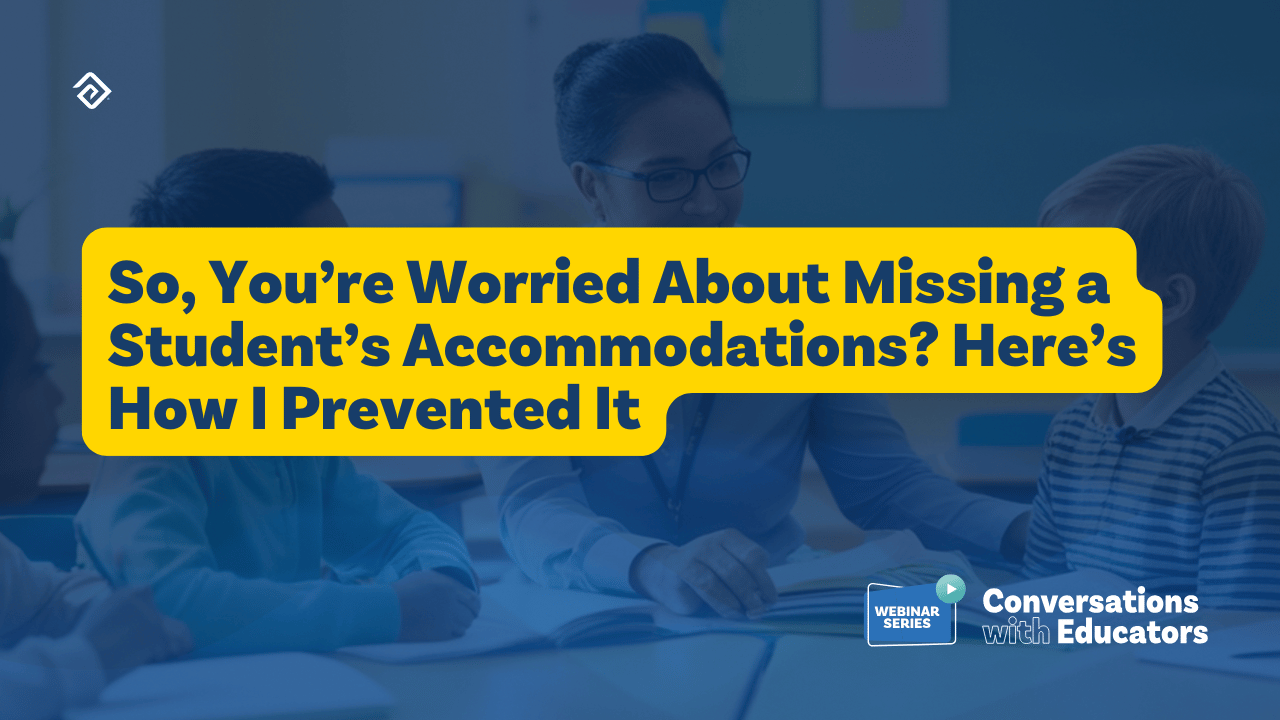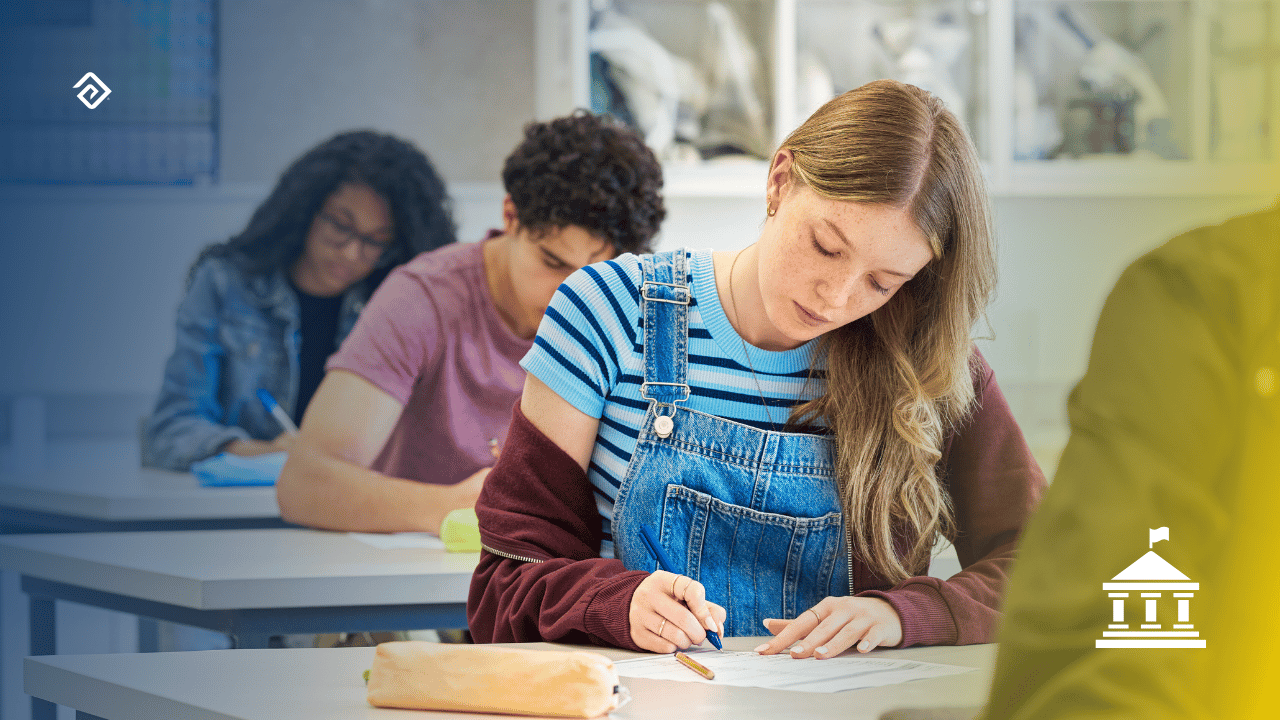Innovative Teaching Strategies: Nine Techniques for Success

Using innovative teaching strategies in the classroom can make learning easier and more effective. Experimenting with diverse strategies in the classroom is an iterative process that will assist teachers in promoting learning to encourage student growth.
Here are nine different methods to integrate innovation into the daily curriculum.

1. Personalized Learning
Personalized learning customizes what, when, and how each student is taught. Rather than using a single approach or plan to teach the entire class, teachers adjust to the capabilities of each student to help them succeed.
65% of high schools in the United States use personalized learning plans for their students, based on the teacher’s unique knowledge of student learning styles and interests. Though each student's individualized learning journey is unique, the final aim is subject proficiency or achieving grade-level benchmarks.
This strategy includes:
- Blended learning: This teaching strategy gives the student more responsibility over their own learning, with the teacher functioning as a general guide and overseer over a more discovery-based learning environment. Students are allowed to choose how and at what pace they move through the content.
- Adaptive learning: Adaptive learning technology collects data from student responses to specific questions on a computer. Then the software uses that information to provide immediate feedback or adaptation for the student and notifies the teacher so they can change the lesson plan accordingly.
2. Project-Based Learning
Project-based learning creates exercises that require students to identify a real-world problem and then devise a solution. Project-based learning is built on the development of specific, transferable skills such as research, critical thinking, problem-solving, and cooperation. It is an active form of learning in which students gain expertise via implementation of their knowledge rather than rote memorization.
Teamwork, digital tools, and using problem-solving skills to find a solution to the challenge at hand are key components of project-based learning. This strategy improves student engagement in education, enhances learning, and allows students to use technology in a variety of ways which can improve the enjoyment and satisfaction of learning.
Teaching with this method links students and schools to their communities and the outside world, demonstrating how all disciplines are interlinked and creating opportunities to experience learning facing real situations rather than contrived examples.
3. Jigsaws
Any educator understands that being able to teach a concept to others successfully demonstrates true mastery. Jigsaws are a tried-and-true cooperative learning technique that capitalizes on this idea by having students teach other students. Students are split into groups, and each group is given distinct information that they must learn well enough to teach to another group.
When each group has learned their information, they are organized into new groups, each of which is made up of one member from each of the content groups, much like a jigsaw puzzle of various pieces coming together to create a whole picture. Each individual member then discusses what they have learned, bringing the teachings to life and allowing students to build their learning by interacting with one another and the content. As they teach others, students become the experts in what they have learned.
The only con to this method is when the “expert” in a group misinterprets facts or is not able to teach others well.
4. Asking Open-Ended Questions
Students often place too much reliance on finding the one right answer in their textbooks versus thinking outside the box. They may develop the belief that there are only right and wrong responses. However, most questions do not have single specific solutions.
To broaden student horizons, teachers should promote lively in-class discussions by asking open-ended questions – those which have multiple possible solutions. Students can put together cohesive elements based on their own knowledge as well as present information to piece together a solution, which they can then support using evidence. This can help the students not just to find their voice, but also to express themselves and support their reasoning.
5. Flipping the Classroom
In this strategy, standard lectures are set aside in favor of class time spent on research, application, and assessment to better connect learners and their needs. Outside of class, students study topics by reading, watching short pre-recorded video lectures, or researching tasks. Class time is used to assist students in working through the content in groups or individually during active learning, emphasizing complex reasoning and problem-solving skills.

6. QR Codes
QR (Quick Response) codes are simple to develop and have several applications in classrooms of all grade levels. QR codes can direct students to information simply by scanning the code with a digital device.
Students can utilize QR codes to:
- Examine their responses
- Cast votes for solutions to problems
- Extend the scope of material found in textbooks
- Obtain survey data for math units
- Take part in scavenger hunts
- Access video tutorials on a subject
- Connect to Google Maps for lessons where geography is important
Students can use QR codes to get material without leaving their seats. They can also design their own to share their knowledge with peers and parents.
7. Inquiry-Based Learning
Inquiry-based learning entails more than simply asking a student what he or she wishes to learn. The main purpose is to generate curiosity to engage students in the material. However, stimulating a student's curiosity is a far more essential and challenging task than simply delivering facts. Despite its complexities, this strategy of learning can be easier on instructors because it shifts some duties from teachers to students and gives students authority to engage with the material.
Taking notes in a class is passive and not always the most productive or enjoyable way to learn. Inquiry-based learning, as opposed to memorizing facts from the teacher, enriches the learning process by allowing students to explore issues on their own.
Students' cognitive talents can be used to develop a good understanding of all subjects while making connections to everyday life. Students are given the freedom to form their own opinions on what they are studying, permitting them to develop a greater knowledge of a subject than through rote memorization and recalling data.
8. Culturally Inclusive Teaching
Teaching can be difficult due to students coming from various cultural backgrounds with diverse needs. Students are unique and acquire educational knowledge differently. Culturally inclusive education connects the subject matter to the cultures of the students, establishing a personal connection. Teachers can get to know the students, their cultural backgrounds, and some basic cultural information, then use examples and exercises to connect their study topic to different cultures. Note that incorporating different cultures must be done delicately and in a manner that respects and promotes diversity in the classroom.
9. Flexible Learning Environments
Teachers should know how to use their classrooms for different instructional approaches. For example, when teachers are willing to change the furniture around in the classroom, they may discover that it is a critical variable for boosting student learning. As education has changed, the classroom space must allow opportunities for students to work alone, communicate with their peers, and collaborate.
Many classrooms today are still packed, cluttered, and noisy environments that make it difficult for kids to move about, inducing communication breakdowns and other barriers to concentration and understanding. Learning environments should maintain fluidity to facilitate one-on-one learning, collaboration, free-thinking, and group debates.
The Bottom Line
Each of the nine strategies employs ways to encourage questioning, exploration, technology usage, and content analysis using available materials and research. Students are able to solve issues independently or with others, push themselves to new heights, and report their discoveries to others, transferring their knowledge. The ultimate goal is to create student engagement and increase intellectual growth.

More Great Content
We know you'll love




